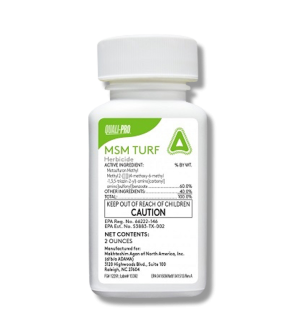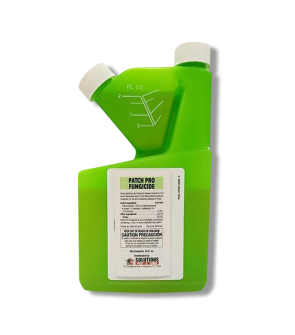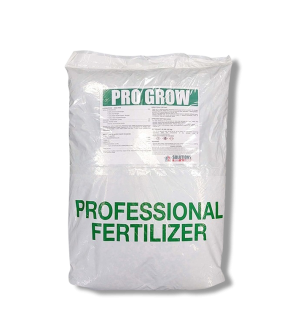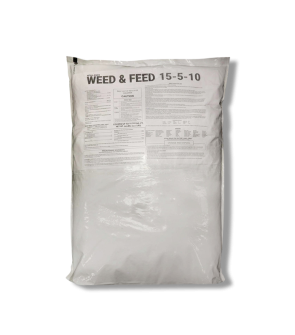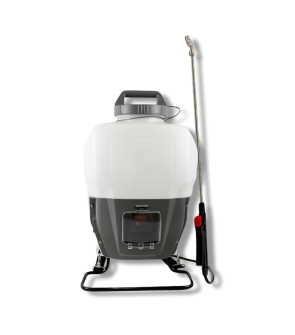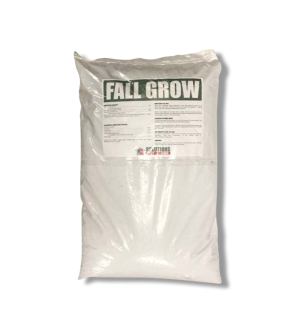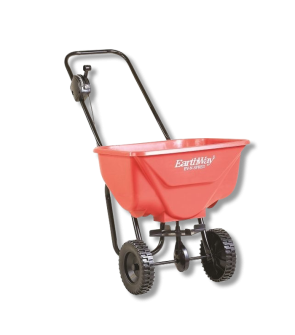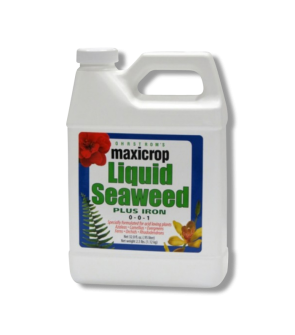Fertilizer Buyer Guide
Most Effective Products
How to Select the Best Fertilizer for Your Lawn
This page is a general buyer's guide for fertilizers. Using the methods or products suggested, you can have a better understanding and control of your turfs health with fertilizers. Follow this guide and use the recommended methods or products and we guarantee 100% improvement within your turf and a better knowledge of which fertilizers to buy.
Maintaining a healthy green lawn is no easy task, but with the proper nourishments that a fertilizer can provide it can be done. Any plant life on your lawn depends on ideal soil conditions. A fertilizer is the best thing that can be done to your grass for it replaces lost nutrients and fights off any pest damage, encroaching weeds, or even potential lawn diseases.
What are Fertilizers

Fertilizer is a formulated product that contains the nutrients necessary for plant growth. These nutrients are nitrogen, phosphorus, and potassium, sometimes referred to as N-P-K. The levels and percentage of npk (nutrients) will always be stated on the fertilizer product and be in the order nitrogen, phosphorus, and potassium.
Once the fertilizer is applied to the soil, these nutrients are absorbed by the grass and helps to stimulate the grass to grow.
Our grass needs to stay fed and healthy in order to stave off any diseases, fight off weeds, and recover from minor pest damage. If the grass is not strong enough, then signs and symptoms of these problems will appear in the lawn, creating unattractive spots that signal something is wrong.
While the soil can supply our grass with some essential nutrients, it cannot do it over the length of an entire growing season; here is where fertilizer is needed.
During the growing season, grass consumes a lot of the energy stored in its roots. You can apply fertilizer to replenish the grasses energy and keep your turf growing strong and healthy for the season.
How to Select Fertilizers

Everyone's turf will have a different set of npk levels based on weather, current diseases or weeds, soil type, and grass type. The best way to know what nutrients are lacking within your soil is to have it tested at your local extension office, governed by the national pesticide information center.
The extension office will run a test and determine any underlining diseases, the turf type, and your soils current npk levels.
Depending on the diseases and current level of npk (nutrients) will determine what fertilizer to buy. Another important number to look for is the bag's weight. Many fertilizers are sold in 50-pound bags.
Example, Solutions 15-5-10 Weed & Feed Fertilizer with Trimec. According to the NPK ratio, this fertilizer is 15% Nitrogen, 5% Phosphorus, 10% Potassium, and this fertilizer is sold in a 50-pound bag. In this entire bag of fertilizer, there is 7 ½ pounds of Nitrogen, 2 ½ pounds of Phosphorus, and 5 pounds of Potassium.
If you are wanting to treat for a specific level of nutrients within your lawn then you will divide the percentage of that nutrient in decimal form.
For example, in the Solutions 8-12-16 Fall Fertilizer, to determine how much fertilizer is needed for 1 pound of nitrogen you will divide the 1 from the level of nitrogen in the fertilizer. So, you will take the 8 (convert to decimal form) in the Solutions 8-12-16 Fall fertilizer and divide it by 1 to determine how many pounds should be used per sq. ft (1 / 0.08 = 12.5 lbs.). Therefore, apply 12.5 pounds of fertilizer per 1,000 sq. ft. to supply 1 pound of nitrogen (if that is the level of nutrient needed in the soil).
The standard application rate of fertilizer you want to apply is between 0.5 lb. to 2 lb. of fertilizer per 1,000 sq. ft.
If you find your soil is oversaturated with nitrogen, then you may want to consider a slow-release fertilizer. Too much nitrogen in a lawn can actually encourage weeds and diseases or burn your grass roots, so a slow-release fertilizer will temper the amount of nitrogen your lawn receives.
Types of Fertilizers

Fertilizers comes as two forms liquid and granular.
Your patience level is needed when applying a granular fertilizer because it is a slow-release. A slow release fertilizer will release nutrients slower into the soil, based on moisture and temperature. It can take about six weeks or up to two months to see any results, but treated plants will receive nutrients for a longer period of time.
A slow release fertilizer is the best option to take for fertilizing due to its longer release of nutrients, more natural colored grass, and longer protection within your turf.
If you need faster results within your lawn for a party or event then you may consider using a liquid fertilizer.
Liquid fertilizers are more synthetic in nutrients. They will immediately make your lawn green, give your plants and turf an immediate boost of nutrients, and stimulates the turf to grow faster. However, this quick release fertilizer does not last very long and soon you will be needing to make another liquid fertilizer application.
When to Apply Fertilizers

Depending on whether you have warm-seasoned grass or cold-season grass in your yard will determine the season to fertilize. Generally, you will want to apply a fertilizer twice in the year.
Before apply a fertilizer inspect your lawn for any activity of diseases or weeds within your lawn.
Our go to product for treating weeds is MSM Turf Herbicide. MSM Turf is a selective post-emergent herbicide that is great for treating a wide variety of broadleaf weeds on warm and cool-season grasses.
If you find signs of lawn disease, then use Patch Pro. Patch Pro is a fungicide that is labeled to deal with diseases like brown patch, dollar spot, powdery mildew, and snow mold.
Your soil should not be too cool or too warm when you apply fertilizer. In spring, you will apply a fertilizer when the soil temperature warms to 55 degrees Fahrenheit. In fall, you will want to apply fertilizer before temperatures drop too low, about 6 weeks before the first frost of the year.
How to Apply Fertilizer

The first thing to do before applying a fertilizer is to cut the grass 1 to days before application.
This will help to remove any dead patches of turf within your lawn and help loosen the soil for the fertilizer to reach the roots more easier.
To determine how much fertilizer to use calculate the square footage of the area to treat.
To do this, measure in feet and multiply the area length times the width (length X width = square footage).
The label of the fertilizer you choose will give you the recommended application rate. Solutions 15-5-10 Weed & Feed Fertilizer, for instance, recommends applying 3.2 to 4.0 pounds of product per 1,000 square feet of turf grass.
Lets say if you measured an area of 2,000 square feet, you would need to apply between 6.4 and 8.0 pounds of 15-5-10 fertilizer to your yard.
For liquid fertilizers you will load into your selected sprayer of choice, preferably a hand pump sprayer for easier application. Take half of the measured water and load into the sprayer tank, then add the appropriate amount of fertilizer product, and fill the rest of the way with the remaining amount of water. Agitate well to ensure an even mix.
Apply a low, pressure spray onto foliage until it is properly coated with spray solution. For best results, make sure to spray the top and underneath of foliage leaves.
With a granular fertilizer, load your measured amount of product into a calibrated push spreader, and broadcast half your granules in parallel lines once across the area. Then broadcast the other half at a perpendicular angle to cover the area in its entirety. Once the product is applied, water it in.
For either a liquid or granular application, be sure to walk at an even pace to ensure an even spread across your entire yard.

